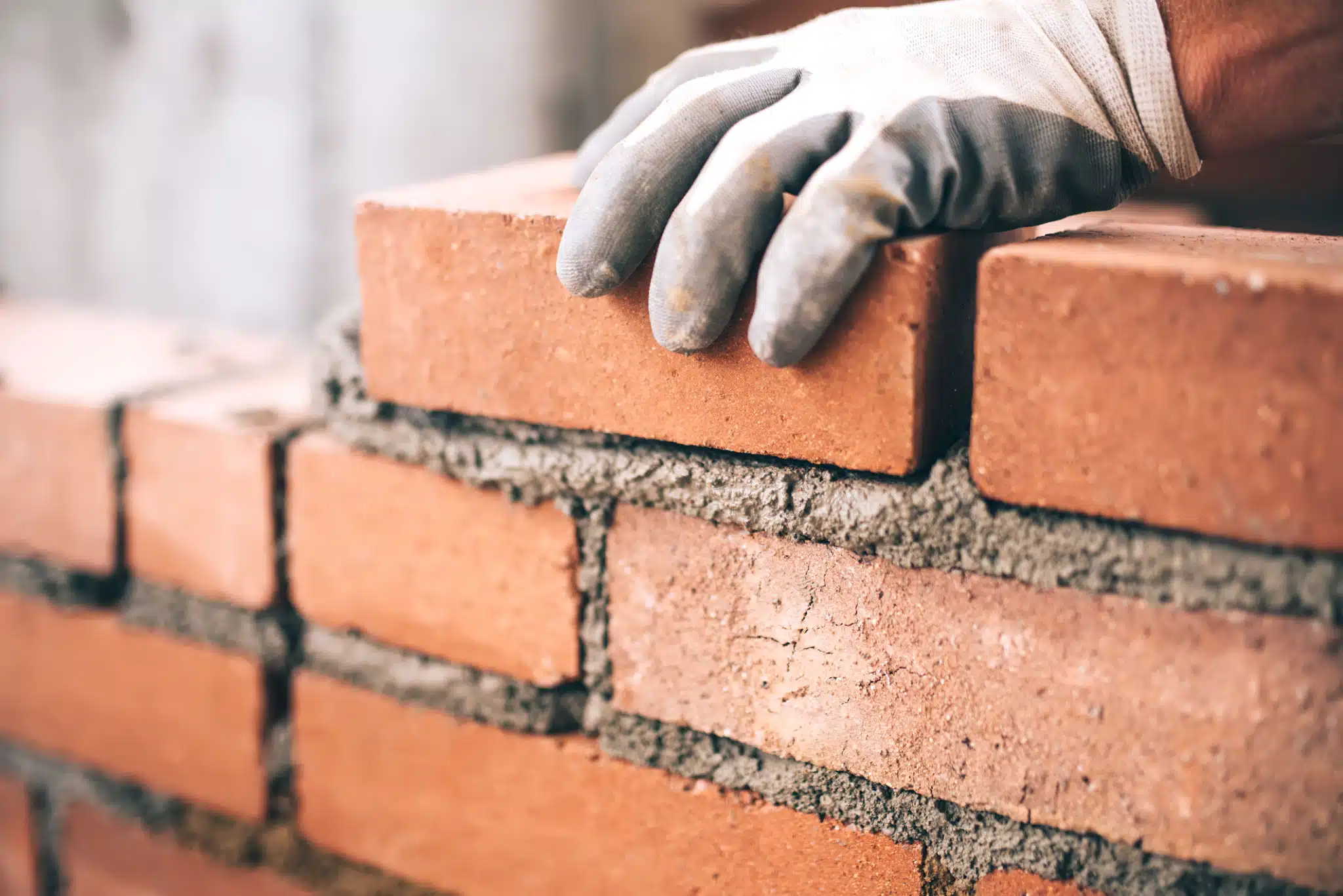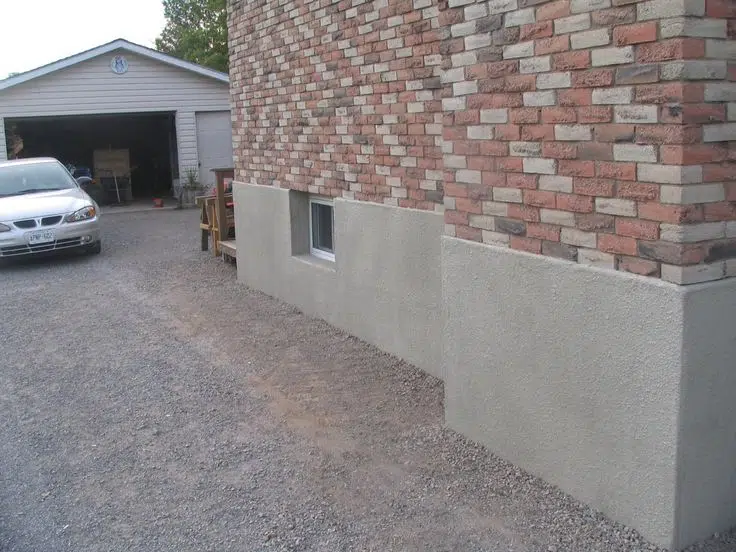Commercial property owners in Ontario face numerous challenges when it comes to maintaining their buildings, and brick repair is often at the top of the list. Brick structures, while durable and attractive, can develop various issues over time due to weather exposure, structural stress, and general wear and tear. In this comprehensive guide, we’ll explore the five most common commercial brick repair problems and provide expert advice on how to identify and address them effectively.
1. Identifying and Addressing Mortar Deterioration
Mortar deterioration is one of the most frequent issues affecting commercial brick structures. Over time, the mortar joints between bricks can weaken, crumble, or develop gaps, compromising the overall integrity of the wall.
Signs of Mortar Deterioration:
- Visible cracks or gaps in the mortar joints
- Crumbling or powdery mortar
- Loose or missing mortar
- Water infiltration through the joints
How to Address Mortar Deterioration:
- Inspect the affected area thoroughly to determine the extent of the damage.
- Remove the damaged mortar using a chisel or grinder, being careful not to damage the surrounding bricks.
- Clean out the joints to remove any debris or loose material.
- Prepare a new batch of mortar that matches the color and composition of the original.
- Apply the new mortar using a pointing trowel, ensuring it’s properly packed into the joints.
- Allow the mortar to cure according to manufacturer specifications.
It’s essential to address mortar deterioration promptly, as it can lead to more severe issues if left untreated. Regular inspections and maintenance can help catch this problem early and prevent extensive damage.
2. Dealing with Water Damage and Efflorescence
Water damage is a significant concern for brick structures, as it can lead to various problems, including efflorescence – the white, powdery substance that sometimes appears on brick surfaces.
Signs of Water Damage and Efflorescence:
- Damp or discolored areas on brick surfaces
- White, chalky deposits on the brick (efflorescence)
- Peeling paint or wallpaper on interior walls
- Musty odors or visible mold growth
How to Address Water Damage and Efflorescence:
- Identify and address the source of water infiltration (e.g., leaky gutters, poor drainage, or faulty flashing).
- Allow the affected area to dry completely.
- For efflorescence, brush off the white deposits using a stiff brush.
- Clean the brick surface with a mild detergent solution or specialized brick cleaner.
- Apply a breathable, water-repellent sealer to prevent future water infiltration.
- Improve drainage around the building to direct water away from the foundation.
Preventing water damage is crucial for maintaining the longevity of your brick structure. Regular gutter cleaning, proper grading, and timely repairs of any water-related issues can help avoid costly damage in the future.
3. Repairing Cracks and Spalling in Commercial Bricks
Cracks and spalling (flaking or chipping of the brick surface) are common issues that can affect the appearance and structural integrity of commercial brick buildings.
Signs of Cracks and Spalling:
- Visible cracks in individual bricks or across multiple bricks
- Flaking or chipping of the brick surface
- Pieces of brick falling off the wall
- Uneven or rough brick surfaces
How to Address Cracks and Spalling:
- Assess the extent of the damage and determine if it’s a structural issue or surface-level problem.
- For minor cracks, clean out any debris and apply a specialized brick filler or patching compound.
- For spalling, remove any loose or damaged material from the brick surface.
- Apply a brick-colored patching compound to restore the surface, matching the texture and color of the surrounding bricks.
- For severe damage or large cracks, consider replacing the affected bricks entirely.
- Address any underlying issues that may have caused the cracks or spalling, such as water infiltration or structural movement.
It’s important to note that extensive cracking or spalling may indicate more serious structural issues. In such cases, it’s best to consult with a professional brick repair specialist to assess the situation and recommend appropriate solutions.
4. Addressing Structural Issues in Brick Facades
Structural issues in brick facades can be particularly concerning for commercial property owners, as they can compromise the safety and integrity of the entire building.
Signs of Structural Issues:
- Large, diagonal cracks in the brick wall
- Bowing or bulging of the brick facade
- Separation between the brick veneer and the building structure
- Misaligned windows or doors
- Visible gaps between bricks or at the corners of the building
How to Address Structural Issues:
- Immediately consult with a structural engineer or experienced brick repair specialist to assess the situation.
- Conduct a thorough inspection of the building’s foundation, framing, and support structures.
- Develop a comprehensive repair plan that addresses both the visible damage and the underlying causes.
- Implement necessary structural reinforcements, such as steel ties or anchors, to stabilize the brick facade.
- Repair or replace damaged bricks and mortar as needed.
- Address any foundation issues that may be contributing to the structural problems.
- Monitor the repaired area closely for any signs of recurring issues.
Structural issues in brick facades should never be ignored or addressed without professional guidance. The safety of building occupants and the long-term stability of the structure depend on proper diagnosis and repair of these problems.
5. Preventing Future Brick Damage Through Proper Maintenance
While addressing existing brick repair issues is crucial, preventing future damage is equally important for commercial property owners. Implementing a proactive maintenance plan can save time, money, and headaches in the long run.
Key Maintenance Practices:
- Regular inspections: Conduct thorough visual inspections of your brick facade at least twice a year, ideally in spring and fall.
- Prompt repairs: Address any minor issues as soon as they’re discovered to prevent them from escalating into major problems.
- Proper cleaning: Clean brick surfaces periodically using appropriate methods and products to remove dirt, mold, and other contaminants.
- Moisture control: Ensure proper drainage around the building and maintain gutters and downspouts to prevent water damage.
- Sealing: Apply a breathable, water-repellent sealer to brick surfaces every 5-10 years to provide additional protection against moisture infiltration.
- Vegetation management: Keep trees and shrubs trimmed away from brick walls to prevent moisture retention and physical damage.
- Professional assessments: Schedule periodic evaluations by brick repair professionals to catch potential issues early.
Developing a Maintenance Plan:
- Create a detailed checklist of maintenance tasks and inspection points specific to your building.
- Establish a regular schedule for inspections and maintenance activities.
- Assign responsibilities to staff members or contract with a professional maintenance service.
- Keep detailed records of all inspections, repairs, and maintenance activities.
- Stay informed about best practices in brick maintenance and repair through industry publications and professional associations.
By implementing a comprehensive maintenance plan, commercial property owners can significantly extend the life of their brick structures and minimize the need for costly repairs in the future.
Conclusion
Commercial brick repair issues, while common, can be effectively managed with proper knowledge, timely intervention, and regular maintenance. By understanding the five key areas we’ve discussed – mortar deterioration, water damage and efflorescence, cracks and spalling, structural issues, and preventive maintenance – property owners in Ontario can better protect their investments and maintain the beauty and integrity of their brick buildings.
Remember, while some minor repairs can be handled in-house, it’s always wise to consult with professional brick repair specialists for complex issues or when you’re unsure about the best course of action. At Fix My Brick, we have the expertise and experience to address all your commercial brick repair needs, ensuring your property remains strong, safe, and attractive for years to come.
Don’t wait for small brick repair issues to become major problems. Take action today to protect your commercial property and preserve its value. Contact Fix My Brick for a comprehensive assessment and expert repair solutions tailored to your specific needs.
\n\n\nWhat is the return policy?
Our return policy allows you to return items within 30 days of purchase for a full refund, provided they are in their original condition.
How can I track my order?
You can track your order by logging into your account and clicking on the ‘Orders’ section. You will find tracking information available for your shipped orders.
Do you offer international shipping?
Yes, we offer international shipping to select countries. Please check our shipping policy for more details and the list of countries we ship to.
What payment methods do you accept?
We accept various payment methods including credit cards, PayPal, and bank transfers. Please see our payment options during checkout for more information.
How can I contact customer support?
You can contact customer support through our contact form on the website, via email at [email protected], or by calling our support line.



